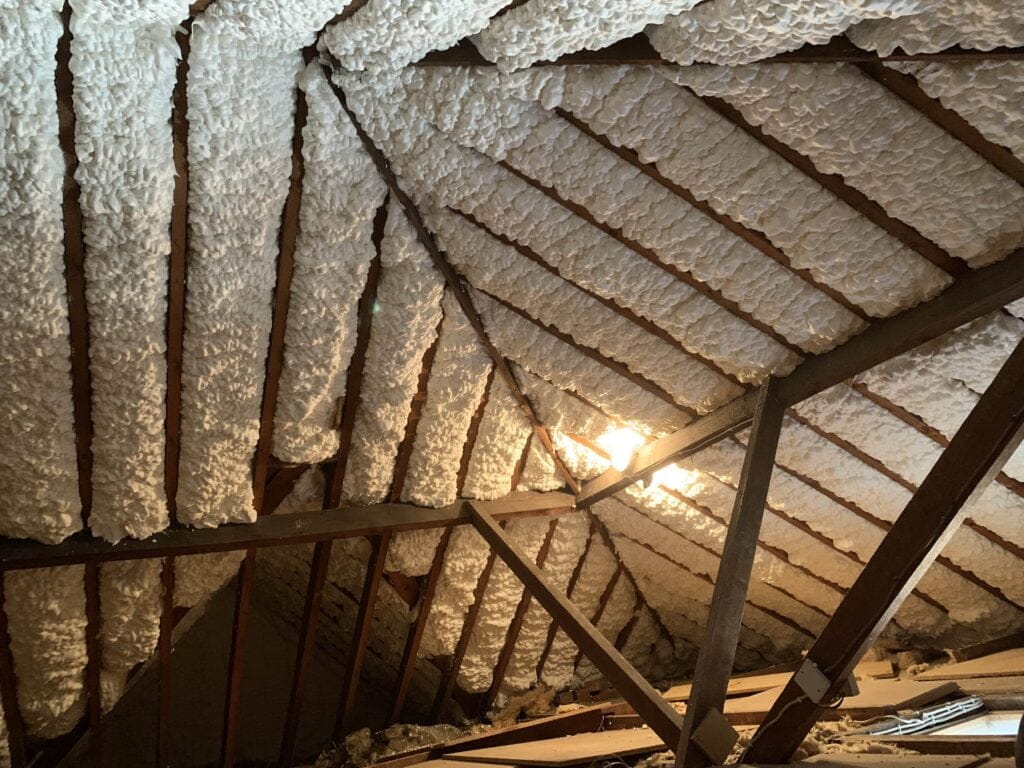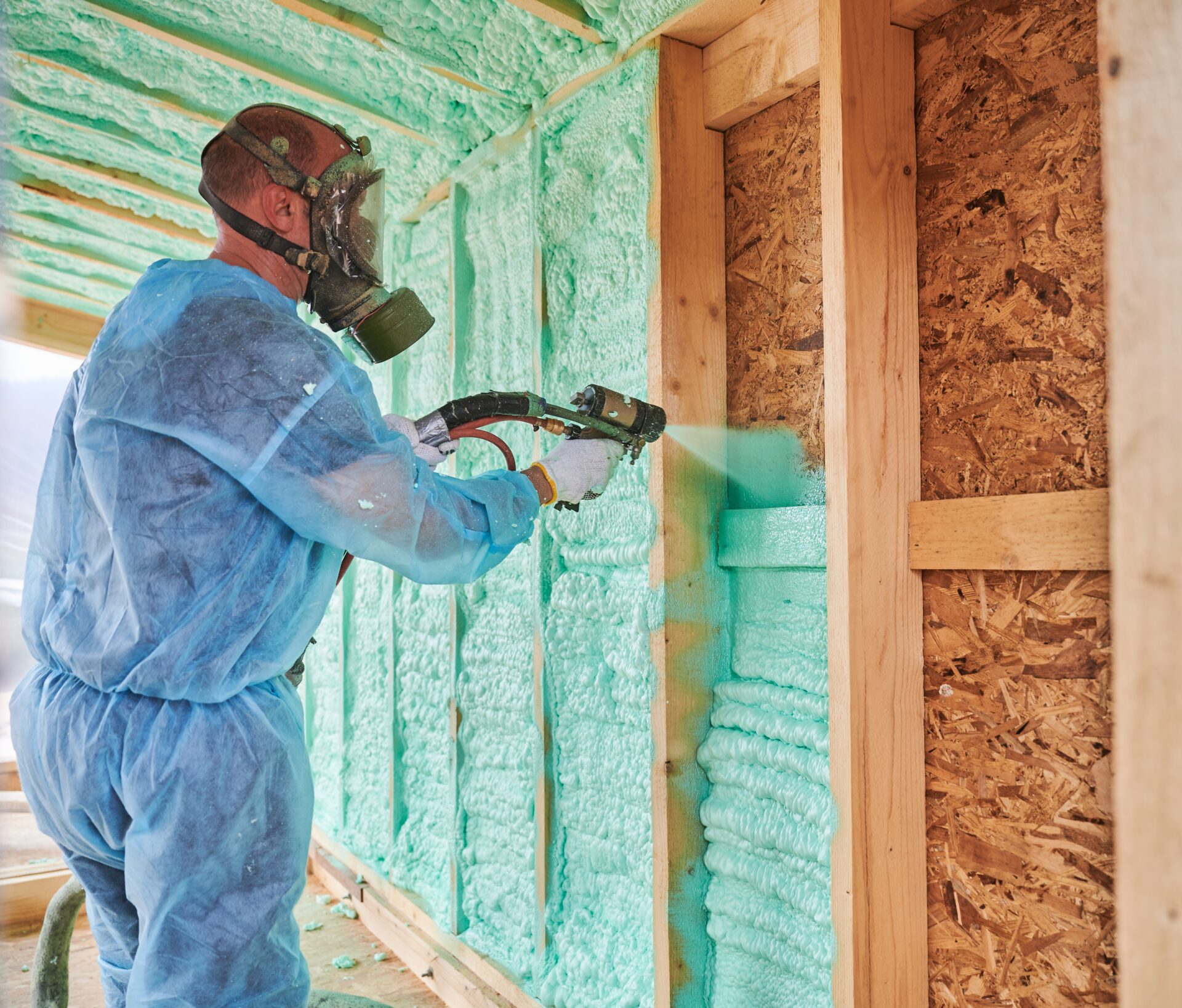How Spray Foam Can Boost Energy Efficiency in your house
How Spray Foam Can Boost Energy Efficiency in your house
Blog Article
Spray Foam: The Ultimate Remedy for Air Sealing and Insulation
Spray foam insulation has actually arised as a leading remedy for efficient air securing and thermal insulation, using a special combination of buildings that establish it apart from conventional techniques. Understanding the complete extent of its advantages, setup procedures, and comparisons with other insulation types is crucial for making educated choices.
What Is Spray Foam?
Spray foam is a versatile insulation product that incorporates the principles of air securing and thermal resistance to boost power effectiveness in buildings. Made up largely of polyurethane or various other similar substances, spray foam is used as a liquid that increases upon contact with surface areas, producing a solid, continual layer of insulation. This special residential or commercial property allows it to load spaces, cracks, and gaps that conventional insulation products may forget, supplying a superior air seal.
There are 2 primary kinds of spray foam: open-cell and closed-cell. Open-cell spray foam is lighter and a lot more flexible, using excellent audio absorption and a lower R-value per inch - Spray Foam. In comparison, closed-cell spray foam is denser, providing a greater R-value, moisture resistance, and added architectural stability to constructing components
The application procedure usually involves specific equipment, making sure a smooth application that sticks to numerous substrates, consisting of wood, metal, and concrete. This versatility makes spray foam suitable for both brand-new constructions and retrofitting existing structures. Its capability to develop an airtight barrier dramatically contributes to decreasing power intake and improving indoor air high quality, consequently making it a recommended choice among building contractors and homeowners alike.
Advantages of Spray Foam Insulation
Among one of the most significant benefits of spray foam insulation is its extraordinary capability to create a continuous air barrier, which efficiently reduces energy loss. Unlike standard insulation materials, spray foam broadens to fill up spaces and fractures, guaranteeing that air leakage is dramatically minimized. This particular not only improves energy efficiency yet additionally brings about decrease energy expenses in time.
Furthermore, spray foam insulation offers superior thermal resistance, adding to an extra secure indoor environment. Its high R-value per inch permits reliable insulation in constrained areas, making it optimal for attics, wall surfaces, and crawl rooms. The moisture-resistant homes of spray foam help protect against mold and mildew development, promoting much healthier living conditions.
Another essential benefit of spray foam insulation is its sound-dampening qualities (Spray Foam). It properly minimizes noise transmission in between rooms, developing a quieter and a lot more comfortable home atmosphere. The sturdiness of spray foam also attracts attention, as it does not sag or settle gradually, maintaining its efficiency throughout its lifespan
Exactly How Spray Foam Functions
Understanding just how spray foam insulation functions is important for appreciating its efficiency in air sealing and thermal resistance. Spray foam insulation contains 2 key parts: isocyanate and polyol resin. When these components are blended, they undertake a chain reaction that creates the material to expand quickly, creating a dense foam that fills up voids, cavities, and fractures.
As the foam broadens, it sticks to surface areas, creating an airtight seal that substantially lowers air seepage. This particular makes spray foam insulation highly effective at stopping drafts and dampness infiltration, which can lead to energy loss and damage in time. Furthermore, the closed-cell variation of spray foam uses premium thermal resistance as a result of its rigid structure, effectively reducing heat transfer.
The distinct properties of spray foam allow it to conform to irregular surfaces, ensuring comprehensive coverage and a smooth obstacle. Therefore, spray foam insulation not only improves energy efficiency however likewise contributes to improved interior air top quality by minimizing the build-up of pollutants and allergens. Inevitably, recognizing the auto mechanics behind spray foam highlights its role as a premium selection for insulation and air securing in both domestic and commercial applications.
Setup Process Review

Prior to installation, the area has to be properly cleansed and prepped, ensuring that surfaces are devoid of debris, dirt, and dampness. This step is vital due to the fact that contaminants can jeopardize attachment and total efficiency. As soon as the area is prepared, the application involves mixing both components of the spray foam, which expands upon get in touch with and fills up spaces successfully.
Educated specialists need to perform the installment, making use of customized tools to ensure uniform coverage and optimal density. Safety precautions, including wearing safety equipment and making certain correct air flow, are essential during this process. After application, the foam typically treatments promptly, creating a strong barrier that enhances energy efficiency.
Comparing Spray Foam to Traditional Insulation
When evaluating insulation options, Get More Information spray foam insulation stands apart in contrast to typical products such as fiberglass and cellulose. Among the key benefits use this link of spray foam is its exceptional air sealing capabilities. Unlike fiberglass and cellulose, which can permit air seepage, spray foam broadens upon application, filling crevices and gaps to develop a closed seal. This results in boosted power efficiency, as much less heated or cooled down air runs away the home, causing lower energy expenses.
Furthermore, spray foam offers a greater R-value per inch than conventional insulation types, offering even more efficient thermal resistance in a thinner profile. This particular is especially advantageous in spaces with minimal tooth cavity depth. In addition, spray foam is immune to wetness and mold development, which can be a substantial worry about cellulose and fiberglass, specifically in damp settings.
However, spray foam insulation commonly carries a higher in advance price than its conventional counterparts. House owners have to weigh this initial investment versus lasting power savings and performance benefits. Eventually, while both insulation types serve their objective, spray foam arises as a more advanced service for contemporary insulation requirements, especially in regards to air securing and thermal performance.

Conclusion
In summary, spray foam insulation represents a highly effective solution for attaining optimum air securing and thermal resistance. Its special buildings, consisting of dampness resistance and noise dampening, make it appropriate for various applications in both new building and constructions and retrofitting tasks (Spray Foam). Although the first expenses may be higher contrasted to standard insulation materials, the long-term advantages, such as substantial energy savings and boosted interior air high quality, justify the financial investment and highlight its worth in modern structure methods.
Spray foam insulation has arised as a leading service for reliable air sealing and thermal insulation, offering a special combination of buildings that set it apart from typical methods.Spray foam is a functional insulation material that integrates the principles of air securing and thermal resistance to boost energy performance in buildings.When examining insulation options, spray foam insulation these details stands out in comparison to typical materials such as fiberglass and cellulose. Eventually, while both insulation kinds serve their function, spray foam arises as a more sophisticated remedy for modern insulation demands, specifically in terms of air sealing and thermal effectiveness.
In recap, spray foam insulation represents an extremely reliable solution for accomplishing optimum air sealing and thermal resistance.
Report this page